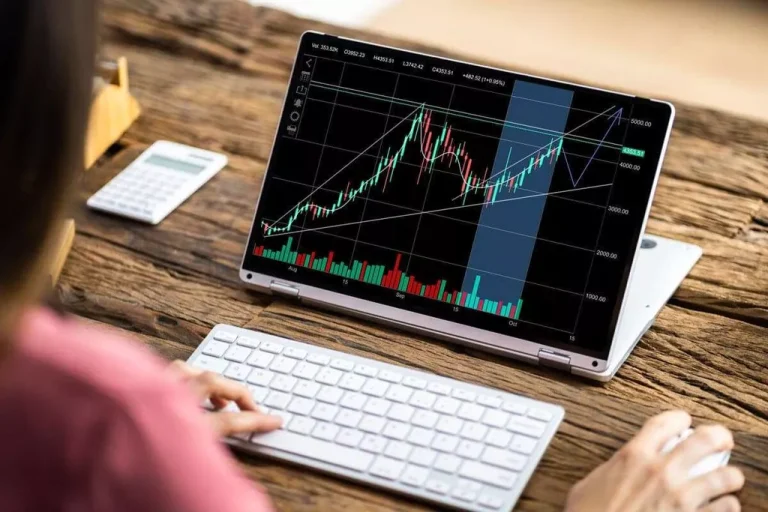In one other 12 months or two, lively portfolio managers might appear on prime once more. The chart beneath shows lively and passive kinds two flip-flop regularly, with a passive approach currently successful. With excessive inflation and rising interest rates, fixed-income funds took a beating. Whereas these statistics present most traders are better off with a passive method, it’s not 100 percent correct https://www.xcritical.in/.
What Is The Efficiency Of Active Funding And Passive Investment?
As a group, actively managed funds, after fees have been taken under consideration Smart contract, are inclined to underperform their passive peers. Nevertheless, even individual traders can take an active investment approach, buying and promoting particular person stocks, mutual funds, or ETFs, hoping to maximise their returns. Active fund managers execute frequent trades to capitalize on market opportunities.
What Is The Most Riskiest Active Or Passive Investment?
- For all the above reasons (low value, nice efficiency, completely hands off), passive investing has turn out to be extraordinarily popular.
- Small-cap territory has been comparatively sort to lively managers in the long run.
- Investments in the Betashares products are subject to investment danger and the value of items might go up and down.
- Traders with each lively and passive holdings can use active portfolios to hedge against downswings in a passively managed portfolio during a bull market.
Actual events may differ from those assumed and changes to any assumptions might have a fabric impact on any projections or estimates. Different events not taken into account might occur and may significantly have an result on the projections or estimates. Accordingly, there could be no assurance that estimated returns or projections might be realized or that precise returns or efficiency outcomes is not going to materially differ from these estimated herein. In markets that aren’t as broadly followed, portfolio managers may have an edge in expertise.
Passive administration focuses on environment friendly market exposure through index replication. Vanguard’s Funding Strategy Group reviews that passive funds obtain ninety nine.8% benchmark correlation whereas requiring solely 4-6 personnel for portfolio management. For occasion, the SPDR S&P 500 ETF Trust (SPY) tracks its index with minimal human intervention and rebalances quarterly.
This approach takes less effort and normally costs less in fees, and it’s a good way to achieve regular, long-term growth. Instead, they believe that the overall market will grow over time, and their investments will enhance in worth. As market circumstances fluctuate and funding philosophies evolve, understanding the nuances of every method is essential.
Energetic funding methods carry 27% greater volatility risk than passive investments because of frequent buying and selling and market timing choices, according to JPMorgan’s 2023 Danger Evaluation Report. This elevated risk publicity stems from concentrated positions and tactical trading methods. Active funding requires continuous market monitoring and strategic decision-making.
For particular person investors, options similar to promoting shares on the ASX with no dealer can provide a more direct approach, allowing for impartial management of share transactions. You want to grasp how only a 1% can dramatically, insidiously, drain your funding returns over a lifetime. Lively buyers as a group are destined to underperform passive buyers. William F. Sharpe proved this mathematically in his 1991 paper, The Arithmetic of Energetic Administration.
In Accordance to Vanguard’s Funding Strategy Group, passive funds obtain ninety nine.8% correlation with their benchmark indices while what are the pros and cons of active investing charging common charges of 0.06% in comparability with lively funds’ 1.07%. This price advantage compounds over time, as a $100,000 investment rising at market charges saves $23,500 in charges over 20 years through passive management. Passive funding follows a systematic index-tracking method with minimal intervention.
It was mainly a coin flip whether an actively managed mutual fund or ETF outperformed its average passive peer from July 2023 via June 2024. About 51% of active strategies survived and beat the average passive fund of their Morningstar Class over that span, a tick up from their 47% success rate in 2023. Given that over the long term, passive investing typically presents greater returns with lower prices, you might marvel if lively investing ever warrants anywhere in the common investor’s portfolio. Many funding advisors consider the most effective strategy is a blend of lively and passive types, which might help minimize the wild swings in inventory prices during risky periods. Passive vs. active management doesn’t should be an either/or alternative for advisors. Combining the two can additional diversify a portfolio and really assist manage overall threat.
What Quantity Of Investments At Present Are Passive Funds?
They may add funds into their funding every month, but don’t actively buy and sell explicit funds or individual stocks. Index funds operate via systematic market replication strategies that reduce costs and maximize effectivity. BlackRock’s Funding Evaluation exhibits that funds like the iShares Core S&P 500 ETF (IVV) maintain all 500 firms in their target index at precisely the identical weights, requiring solely 4-6 annual rebalancing trades. For example, a $10,000 funding in an S&P 500 index fund automatically owns fractional shares of all 500 corporations, offering prompt diversification. You can select the forms of investments you need to maintain and the way you’d prefer to manage your portfolio.
Active investment methods expose capital to market alternatives via strategic safety choice and portfolio administration, while savings accounts present FDIC-insured principal safety with minimal interest. For instance, actively managed progress funds generated average returns of 12.3% in 2023, whereas high-yield savings accounts topped out at 4.5% APY. Passive strategies preserve constant performance through low-cost index replication. According to Morningstar’s 2023 Charge Examine, passive funds’ common expense ratio of 0.06% permits traders to retain ninety nine.94% of market returns, compared to lively funds the place 1.07% fees reduce investor returns. Passive investment strategies give attention to cost-efficient market publicity via index replication.


